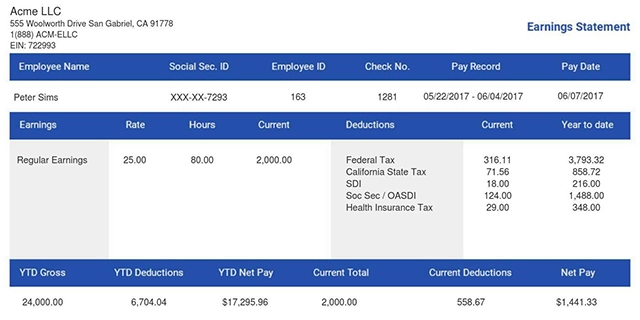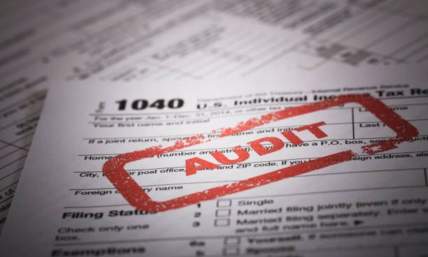Form W2: What is it and What Does It Do?
The Internal Revenue Service (IRS) has more than 2,000 forms and schedules for about every occasion. Even if it urges taxpayers to go digital in their filings, that’s still a stack of documents to sort out. Fortunately, the average taxpayer only has to know and use a dozen or so forms, one of which is the Wage and Tax Statement, more known as a W2 form.
Regarding the frequency of usage, W2 probably comes at a close second compared to Form 1040 used for filing individual tax returns. The form is relatively smaller than most IRS forms but has crucial information about taxes withheld by a taxpayer’s employer.
Here’s an in-depth disclosure of what a W2 form means and why it’s worth knowing.
A History of Tax Withholding
To understand why taxpayers file a W2 form, you must first know why a portion of their income gets withheld. This practice dates back to the Civil War, where both sides levied taxes on income (not just salaries) to fund their respective war efforts. Taxes comprised 21% of the North’s war funds during the conflict and 5% of the South’s.
It wasn’t until the 20th century that tax withholding became a tenet of the national economy, due in no small part to two watermark pieces of legislation. The first was the Sixteenth Amendment, ratified by Congress in 1913, which gave the government legal rights to levy taxes on sources of income. In a way, the Amendment laid the foundation for America’s income tax system.
The second came 30 years later, in 1943: the Current Tax Payment Act. During this time, the U.S. was at war in Europe and the Pacific, and it needed extra revenue to fund the war effort. The Act streamlined income tax collection by allowing employers to withhold income tax from paychecks and remit them directly to the IRS.
Tax withholding should’ve ended with the war in 1945 (at least enacted every time the country is at war). However, it stuck because of a side effect: without tax withholding, the government will be forced to raise prices of goods to compensate. That’s what happened during and after World War I, which was a hard lesson to learn.
Today, people have mostly come to terms with tax withholding. Income taxes comprise almost half of the federal tax revenue every year. The least people can do now is to make sure their workplaces are withholding the right amount. That’s where the W2 form becomes a big help to taxpayers.
Also read: What are the Secure Electronic Delivery Methods Of W2 and 1099 Forms?

The Form at a Glance
Here’s what a W2 form looks like—just half a page long. For its small size, however, it has plenty of blanks to fill.
The details are divided into lettered and numbered groups, the former consisting of:
-
The employee’s Social Security Number
-
Employer identification number (EIN)
-
Employer’s name, address, and zip code
-
Control number (if applicable, can be left blank)
-
The employee’s full name, including suffixed
-
The employee’s address and zip code
Meanwhile, the numbered group consists of:
-
Federal tax income withheld and remitted to the IRS
-
Social Security wages (maximum of USD$142,800)
-
Social Security tax withheld (6.2% of the wages)
-
Medicare wages and tips (including FFCRA sick/family leave)
-
Medicare tax withheld (1.45% of wages below USD$ 200,000, additional 0.9% for wages over USD$200,000)
-
Social Security tips
-
Allocated tips
-
[intentionally left blank]
-
Dependent care benefits
-
Nonqualified plans
-
Applicable codes that can reduce an employee’s taxable wages (e.g., advanced retirement contributions), instructions provided in the form
-
Statutory employee, retirement plan, or third-party sick pay
-
Other amounts and descriptions
-
Employer’s state residence and state ID number
-
State wages, tips, etc.
-
State income tax
-
Local wages, tips, etc.
-
Local income tax
-
Name of city or locality of residence

The W2 form is completed in six copies, each indicated below where the specific copy will go.
-
Copy A – the only form dyed red, forwarded to the Social Security Administration along with a W3 form (Transmittal of Wage and Tax Statements)
-
Copy 1 – for the local tax office, features a fixed form number like Copy A
-
Copy B – filed alongside the employee’s federal tax return
-
Copy C – for the employee’s reference
-
Copy 2 – filed alongside the employee’s state or local tax return
-
Copy D – for the employer’s reference
Because Copy A requires a special red ink, you can’t copy a W2 template off the internet and print these forms en masse. For hard copies, office supply stores carry stocks of W2 forms produced to specifications by the federal agencies involved. Accounting firms also carry these forms along with the services they render.
However, the SSA has urged everyone to file their W2 and other forms online. As of the 2021 tax year, an employer with ten or more W2 forms must file online. The primary benefit of the electronic option is that there’s no need to include W3 forms in the W2s. Most payroll software in the market features W2 forms.
Usually, the forms become available for purchase around December. The deadline for filing print and electronic W2 forms with the SSA is January 31 of the following year (if the date falls on a weekend or legal holiday, it moves to the next business day). It’s also the deadline for employers to mail copies to their employees.
W2 Form Variants
For employers and employees in inhabited U.S. territories, their W2 forms indicate where they’re based. These variants are as follows:
-
W-2GU for Guam
-
W-2VI for the U.S. Virgin Islands
-
W-2AS for American Samoa
-
W-2CM for Northern Marianas
-
Form 499R-2/W-2PR for Puerto Rico
These variants only come with four copies instead of six: Copy A for the SSA, Copy B for the territory’s tax office, Copy C for the employee, and Copy D for the employer. W-2PR is even more unique in that it’s written in both English and Spanish. For taxation in these locations, it’s best to be informed about their special tax policies.
Another variant is the W2C form, also known as the Corrected Wage and Tax Statement. This form should only be used to make corrections to a previously filed W2. Expect this to be a long document, as it requires indicating both the previously stated details and the correct ones.
Also read: The Complete Checklist To Prepare For The W2 Form Deadline
Filing 1040s Made Easy
Few people, if any, look forward to tax season, not because they have to pay their taxes, but they have to file them. A combination of varying readings of tax policies and conflicts of interest has made tax filing a painful chore. It’s estimated that Americans spend on average half a day just to get their forms and figures done.
Such difficulties make documents like W2 forms all the more critical. While everyone files taxes annually, the government can’t wait that long for the money to come. The W2 helps maintain the steady cash flow into the treasury by calculating one’s withholding taxes.
The details in the form can make filing your Form 1040 later much more manageable. The withheld taxes reported enables you to factor into whether you’re in for a refund or more tax payments, be it federal or local. The employee’s copies help verify the information provided in their Form 1040, making sure they pay what they owe to the country.
Proof of Income
Perhaps more crucial is that the W2 form can serve as a legitimate proof of income in purchasing certain assets like rental homes and loans. While not having as much leverage as paycheck stubs, W2 forms are an additional layer of protection when landlords screen potential renters. After all, it openly declares a person’s income and taxes paid.
Also, as explained earlier, nobody can just copy the template off the internet and print their own. This makes W2 forms—and other IRS documents to an extent—less susceptible to bank fraud, a problem plaguing the lending industry as of late. They’re even more secure than paycheck stubs, of which fake ones are aplenty in circulation.
Keeping finances as accurate as possible works both ways. For the consumer, they’ll be spared the trouble of making investments their current paychecks can’t sustain. For the business, they can reduce the risk of suffering debilitating losses due to delinquencies. Who doesn’t want a win-win situation?
Also read: Payroll Tax Vs Income Tax - The Ultimate Guide

Conclusion
Withholding taxes are here to stay, even as the debate on their benefits continues to this day. The best way to cope with garnishes to their wages is by ensuring the right amount of withheld taxes. A duly accomplished W2 form provides such crucial information for various purposes, from filing annual tax returns to buying that dream apartment unit.
Under federal law, employers are obligated to handle filing W2 forms and mail them to their employees in due time. Meanwhile, the average taxpayer is responsible for ensuring the info presented in the forms won’t get them in trouble with the IRS. Both parties must work together to keep the tax system alive and well.
Remember that your W2 form is different to the pay stubs that employees usually receive. The W-2 form is like a net earnings pay stub for your employee.















